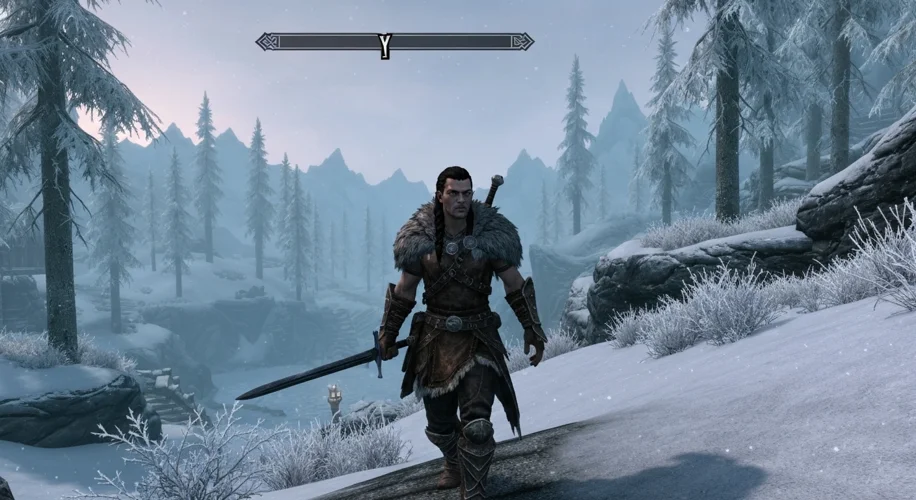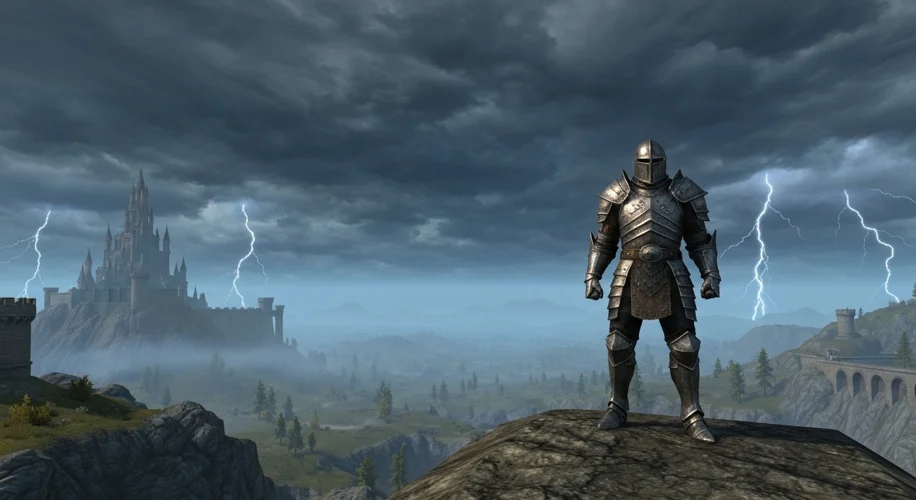In the annals of gaming history, few titles evoke such a potent blend of adoration and exasperation as The Elder Scrolls II: Daggerfall. Released in 1996, this ambitious open-world RPG from Bethesda Softworks was a behemoth – a sprawling digital landscape that promised unparalleled freedom and depth, but often delivered it wrapped in a chaotic, buggy package.

To understand Daggerfall’s place in history, one must first appreciate the context of its creation. The early to mid-1990s were a golden age for PC gaming, a period where developers were pushing the boundaries of what was technologically possible. Genres were still solidifying, and the concept of a truly open-world RPG, where player agency dictated the narrative and exploration was king, was a relatively nascent idea. Daggerfall wasn’t just a game; it was a statement of intent. It aimed to recreate the entirety of the Iliac Bay region of the continent of Tamriel, a landmass so vast that it would take players hundreds of real-world hours to explore its procedurally generated dungeons, cities, and wilderness.
At its core, Daggerfall was a fantasy epic. Players assumed the role of a disembodied spirit sent to the province of High Rock to fulfill a dying king’s request. However, the “request” was a convoluted mess involving a missing letter, a ghost, and a dark prophecy. The true magic of Daggerfall lay not in its narrative, but in its emergent gameplay. The world was a living, breathing entity, populated by diverse factions, political intrigue, and a sheer number of NPCs that dwarfed most games of its era. Players could join guilds, dabble in arcane magic, engage in complex political maneuvering, and even become involved in the occult. The freedom was intoxicating; the world felt genuinely reactive to the player’s choices.
The game’s technical ambition, however, was its Achilles’ heel. Daggerfall was notoriously buggy. Crashes were common, quests could fail inexplicably, and the sheer scale of the game often led to performance issues. The dungeons, while vast, were repetitive, consisting of procedurally generated mazes that could become frustratingly labyrinthine. NPCs, while numerous, often spoke in nonsensical dialogue, a side effect of the game’s complex linguistic algorithms.
Yet, it’s precisely these flaws that have cemented Daggerfall’s cult status. For many, the challenges and frustrations were part of the experience. The act of overcoming a particularly arduous dungeon, of deciphering a cryptic quest clue, or simply surviving a random encounter felt like a genuine accomplishment. The game demanded patience and perseverance, qualities that were rewarded with a depth of experience rarely seen before or since. Players learned to adapt, to troubleshoot, and to embrace the chaos.
One of the most compelling aspects of Daggerfall was its character creation system. It allowed for an unprecedented level of customization, enabling players to craft unique builds with a wide array of skills and abilities. This, coupled with the game’s open-ended nature, meant that no two playthroughs were ever the same. One player might focus on stealth and assassination, while another might become a powerful mage or a charismatic knight. This replayability, born from the game’s sheer complexity, ensured its longevity.
While Daggerfall may not have been a polished masterpiece in the conventional sense, its impact on the RPG genre is undeniable. It demonstrated the potential of truly open worlds and player-driven narratives. Its innovations, though sometimes overshadowed by its technical shortcomings, paved the way for future Elder Scrolls titles like Morrowind, Oblivion, and Skyrim, which would refine its ambitious concepts into more accessible, yet equally engrossing experiences.
Ultimately, the question of whether Daggerfall is a “good game” is subjective. For those who endured its quirks and embraced its boundless freedom, it was a seminal experience, a digital frontier that offered endless possibilities. For others, its technical issues and unforgiving nature made it an unapproachable relic. Regardless, The Elder Scrolls II: Daggerfall remains a fascinating case study in game development, a testament to the power of ambition, and a cult classic that continues to echo through the corridors of gaming history.

